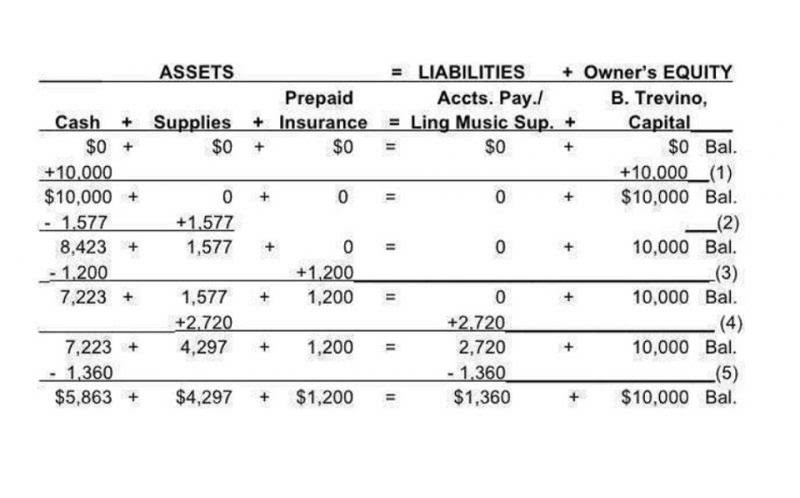A longer DPO indicates that you are retaining cash for a more extended period, which can be advantageous for working capital management. A low DSO suggests that your accounts receivable process is efficient, and customers are paying their invoices promptly. This helps maintain a steady cash flow, reduces the risk of bad debts, and ensures you have funds available for immediate use or investment. Days Sales of Inventory (DSI) is a crucial metric that measures how quickly your company turns its inventory into sales. A shorter DSI indicates efficient inventory turnover, which is essential for cash flow and reducing carrying costs. To execute the manufacturing process, the cash and other assets of the company get locked into the operations.

Inventory holding period
Our writing and editorial staff are a team https://www.bookstime.com/articles/what-is-an-invoice-number of experts holding advanced financial designations and have written for most major financial media publications. Our work has been directly cited by organizations including Entrepreneur, Business Insider, Investopedia, Forbes, CNBC, and many others. This team of experts helps Finance Strategists maintain the highest level of accuracy and professionalism possible. Finance Strategists has an advertising relationship with some of the companies included on this website.
- Let’s dive deeper into practical applications and examples to illustrate how the operating cycle formula works.
- By implementing tailored strategies and optimizing key components, businesses can achieve more efficient cash conversion, enhance financial stability, and position themselves for sustained growth and profitability.
- By implementing the strategies outlined in this guide and staying vigilant, you can achieve a more efficient operating cycle, setting your business on the path to financial success.
- They set goals for faster collections from buyers and quicker sales from stock levels—all aiming for operational effectiveness.
- Have you ever wondered how businesses seamlessly convert investments into cash, ensuring smooth financial operations?
APPLE Operating Cycle Example (NEGATIVE)

Issues like production delays, excess stock, or lenient credit terms can all contribute to a longer cycle, affecting cash flow. Have you ever wondered how businesses seamlessly convert investments into cash, ensuring smooth financial operations? In this guide, we’ll unravel the intricacies of the operating cycle, shedding light on its crucial role in financial management.
Days Sales of Inventory (DSI)

HighRadius provides a powerful, cloud-based Order to Cash solution designed to automate and streamline your financial operations. Our comprehensive suite includes Collections Management, Cash Application, Deductions Management, Electronic Invoicing, Credit Cloud, and dotOne Analytics, enhancing the efficiency of your team and optimizing workflows. The articles and research support materials operating cycle formula available on this site are educational and are not intended to be investment or tax advice.
- On the other hand, companies that sell products or services that do not have shorter life spans or require less inventory tend to be less efficient in terms of operational processes.
- The companies with high operational efficiency are typically those that provide goods or services with short shelf lives i.e., clothing, electronics, etc.
- A high DPO suggests that your company is effectively managing its accounts payable, optimizing cash flow by extending payment terms without straining supplier relationships.
- This adjustment gives a clearer view of cash flow efficiency and working capital management, showing the net duration for converting operational investments into cash.
- The operating cycle, often referred to as the cash conversion cycle, is a fundamental concept in financial management.
- An efficient operational process can also help reduce other costs like marketing, finance, etc.
DSO Calculation Formula
- Conversely, a high DSI may indicate that you have excessive inventory on hand or that products are not selling as expected.
- Say goodbye to the hassle of building a financial model from scratch and get started right away with one of our premium templates.
- Managing your operating cycle efficiently often requires the right tools and software to streamline processes, monitor key performance indicators, and make informed decisions.
- Reducing costs while also increasing speed and improving quality can be beneficial to business owners.
- The operating cycle is important for measuring the financial health of a company.
- Since the received Credit Period will delay the cash outflow from the company, it can be deducted from the Raw Material Conversion Period.
The duration of this cycle will depend on the type and nature of the product and the manufacturing policies. Usually, the completion time period balance sheet of 1 manufacturing cycle will be considered for the calculation of the Operating Cycle. Revenue for FY 2017 is $52,056 million and cost of revenue is $42,478 million respectively. The Operating net cycle (NOC) refers to the period between paying for inventory and cash collected through the sale of receivables.

Best Practices for Managing the Operating Cycle
A manufacturer’s operating cycle might start when the company spends money on raw manufacturing materials to make a product. The operating cycle wouldn’t end until the products are produced and sold to retailers or wholesalers. A shorter operating cycle might suggest a company’s efficiency in managing its inventory and receivables, while a longer one could imply delays or slower turnover. Managing the operating cycle affects how much money a business has for daily use. A company with a quick operating cycle will need less cash on hand because it turns products into cash faster. This process distills complex activities into tangible metrics, illuminating a company’s health through careful analysis of inventory turnover and accounts receivable collection timescales.